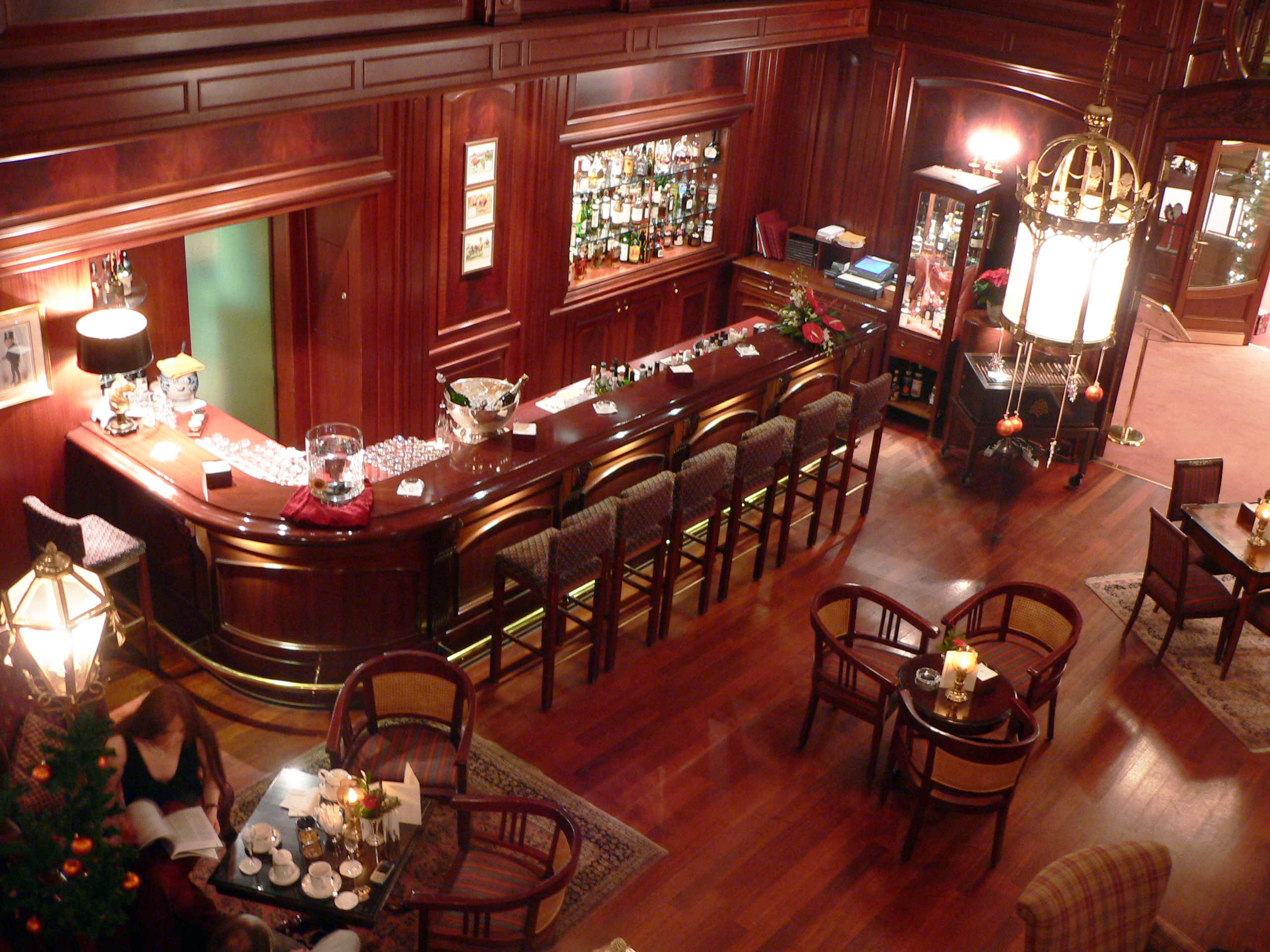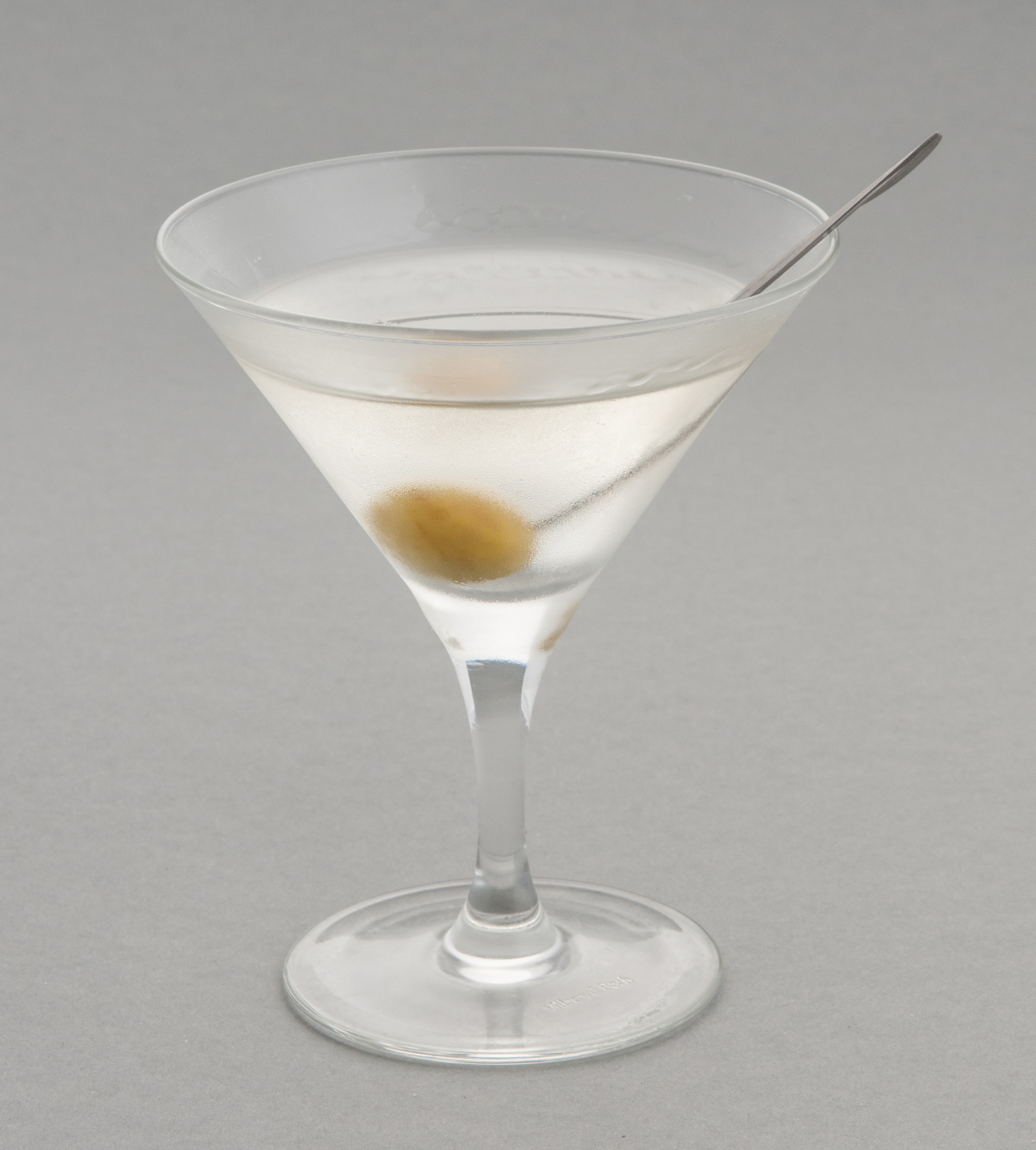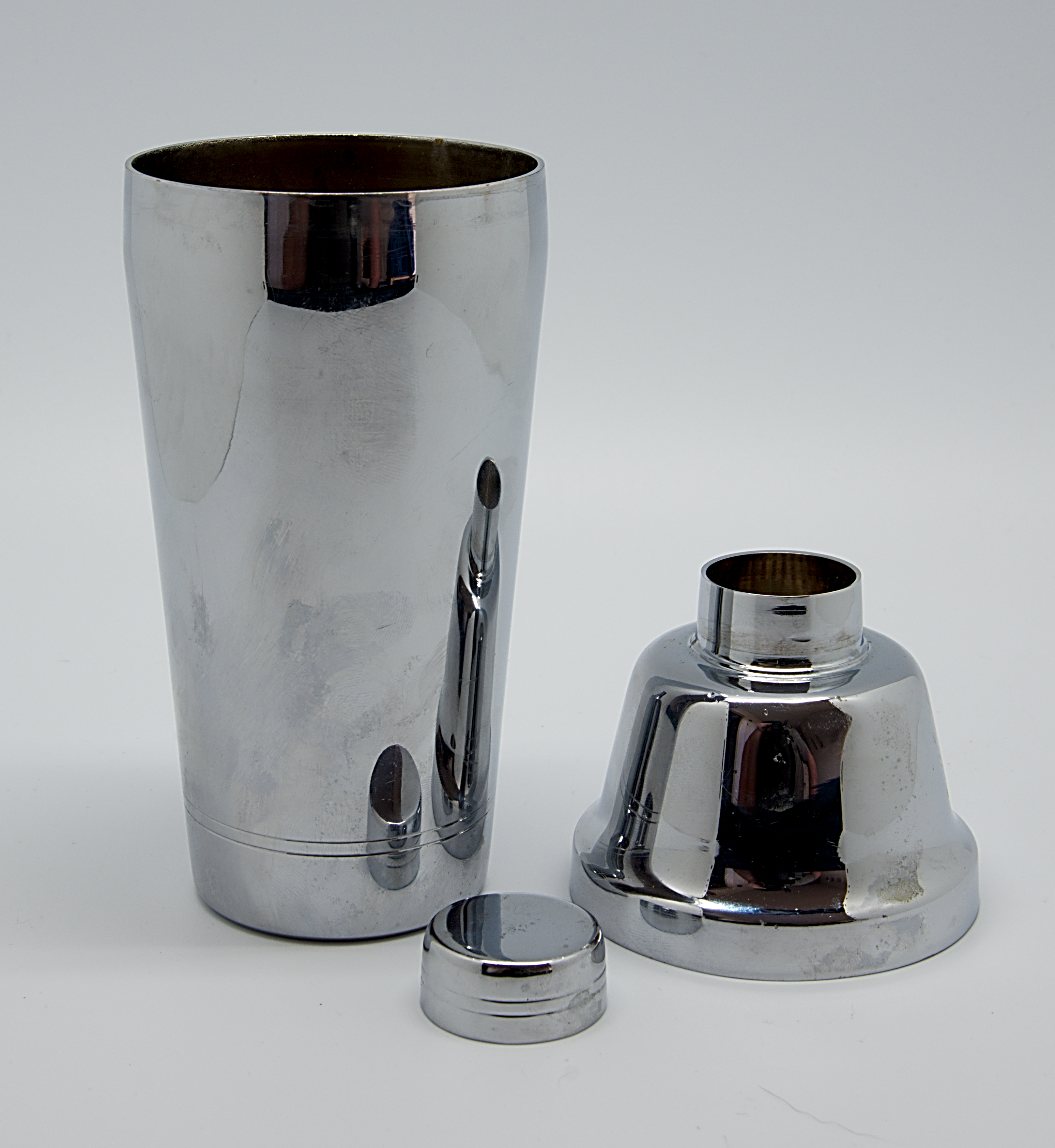|
Hawthorne Strainer
A cocktail strainer is a metal bar accessory used to remove ice from a mixed drink as it is poured into the serving glass. A type of sieve, the strainer is placed over the mouth of the glass or shaker in which the beverage was prepared; small holes in the device allow only liquids to pass as the beverage is poured. There are two common types of strainers. The Hawthorne strainer is a disc (called the "rim") with a handle and two or more stabilizing prongs. A metal spring fixed around the edge of the rim rolls inward to fit inside the glass. The rim of the strainer does not need to touch the rim of the glass, as the spring inside filters out the ice. The Julep strainer is shaped like a bowl A bowl is a typically round dish or container generally used for preparing, serving, or consuming food. The interior of a bowl is characteristically shaped like a spherical cap, with the edges and the bottom forming a seamless curve. This makes ... with a handle, and will fit tightl ... [...More Info...] [...Related Items...] OR: [Wikipedia] [Google] [Baidu] |
Bar (counter)
A bar, also known as a saloon, a tavern or tippling house, or sometimes as a pub or club, is a retail business establishment that serves alcoholic beverages, such as beer, wine, liquor, cocktails, and other beverages such as mineral water and soft drinks. Bars often also sell snack foods, such as crisps or peanuts, for consumption on their premises. Some types of bars, such as pubs, may also serve food from a restaurant menu. The term "bar" refers to the countertop where drinks are prepared and served, and by extension to the overall premises. The term derives from the metal or wooden bar (barrier) that is often located along the length of the "bar". Over many years, heights of bars were lowered, and high stools added, and the brass bar remains today. Bars provide stools or chairs that are placed at tables or counters for their patrons. Bars that offer entertainment or live music are often referred to as "music bars", "live venues", or " nightclubs". Types of bars ... [...More Info...] [...Related Items...] OR: [Wikipedia] [Google] [Baidu] |
Ice Cubes
An ice cube is a small piece of ice, which is typically rectangular as viewed from above and trapezoidal as viewed from the side. Ice cubes are products of mechanical refrigeration and are usually produced to cool beverages. They may be produced at home in a freezer with an ice tray or in an automated ice-making accessory. They may also be produced industrially and sold commercially. Origin of production American physician and inventor John Gorrie built a refrigerator in 1844 with the purpose of producing ice to cool air. His refrigerator produced ice which hung from the ceiling in a basin to lower the ambient room temperature. During his time, bad air quality was thought to cause disease. Therefore, in order to help prevent and treat sickness, he pushed for the draining of swamps and the cooling of sickrooms. Production Trays and bags Ice cube trays are designed to be filled with water, then placed in a freezer until the water freezes into ice, producing ice cube ... [...More Info...] [...Related Items...] OR: [Wikipedia] [Google] [Baidu] |
Cocktail
A cocktail is an alcoholic mixed drink. Most commonly, cocktails are either a combination of spirits, or one or more spirits mixed with other ingredients such as tonic water, fruit juice, flavored syrup, or cream. Cocktails vary widely across regions of the world, and many websites publish both original recipes and their own interpretations of older and more famous cocktails. History The origins of the word ''cocktail'' have been debated (see section Etymology). The first written mention of ''cocktail'' as a beverage appeared in ''The Farmers Cabinet,'' 1803 in the United States. The first definition of a cocktail as an alcoholic beverage appeared three years later in ''The Balance and Columbian Repository'' (Hudson, New York) May 13, 1806. Traditionally, cocktail ingredients included spirits, sugar, water and bitters, however, this definition evolved throughout the 1800s, to include the addition of a liqueur. In 1862 Jerry Thomas published a bartenders: guide called ' ... [...More Info...] [...Related Items...] OR: [Wikipedia] [Google] [Baidu] |
Cocktail Glass
A cocktail glass is a stemmed glass with an inverted cone bowl, mainly used to serve straight-up cocktails. The term ''cocktail glass'' is often used interchangeably with ''martini glass'', despite their differing slightly. Today, the glass is used to serve a variety of cocktails, such as the martini and its variations (French martini, vodka martini, espresso martini, appletini), Manhattan (cocktail), Manhattan, Brandy Alexander, pisco sour, Negroni, cosmopolitan (cocktail), cosmopolitan, gimlet (cocktail), gimlet, and the grasshopper (cocktail), grasshopper. History Invented in the late 19th century, its form derives from the fact that all cocktail A cocktail is an alcoholic mixed drink. Most commonly, cocktails are either a combination of spirits, or one or more spirits mixed with other ingredients such as tonic water, fruit juice, flavored syrup, or cream. Cocktails vary widely acr ...s are traditionally served chilled and contain an aromatic element. Thus, the ... [...More Info...] [...Related Items...] OR: [Wikipedia] [Google] [Baidu] |
Sieve
A sieve, fine mesh strainer, or sift, is a device for separating wanted elements from unwanted material or for controlling the particle size distribution of a sample, using a screen such as a woven mesh or net or perforated sheet material. The word ''sift'' derives from ''sieve''. In cooking, a sifter is used to separate and break up clumps in dry ingredients such as flour, as well as to aerate and combine them. A strainer (see Colander), meanwhile, is a form of sieve used to separate suspended solids from a liquid by filtration. Industrial strainer Some industrial strainers available are simplex basket strainers, duplex basket strainers, T-strainers and Y-strainers. Simple basket strainers are used to protect valuable or sensitive equipment in systems that are meant to be shut down temporarily. Some commonly used strainers are bell mouth strainers, foot valve strainers, basket strainers. Most processing industries (mainly pharmaceutical, coatings and liquid food ... [...More Info...] [...Related Items...] OR: [Wikipedia] [Google] [Baidu] |
Cocktail Shaker
A cocktail shaker is a device used to mix beverages (usually alcoholic) by shaking. When ice is put in the shaker, this allows for a quicker cooling of the drink before serving. Usage A shaken cocktail is made by putting the desired ingredients (typically liquor, fruit juices, syrups, liqueurs and ice cubes) in the cocktail shaker. Then it is shaken vigorously for around 10 to 18 seconds, depending upon the size and temperature of the ice. Varieties There are at least three varieties of cocktail shaker: * The Boston Shaker: A two-piece shaker consisting of a 28 imp fl oz (800 ml) metal bottom and a 16 imp fl oz (450 ml) mixing container made of plastic, metal or (more traditionally) glass. The mixing container and bottom are inserted into each other for shaking or used separately for stirring or muddling. A separate strainer, such as a Hawthorne or Julep strainer, is required for this type shaker if crushed ice is used. Without such a strainer, some bartenders may instead st ... [...More Info...] [...Related Items...] OR: [Wikipedia] [Google] [Baidu] |
Liquid
A liquid is a nearly incompressible fluid that conforms to the shape of its container but retains a (nearly) constant volume independent of pressure. As such, it is one of the four fundamental states of matter (the others being solid, gas, and plasma), and is the only state with a definite volume but no fixed shape. A liquid is made up of tiny vibrating particles of matter, such as atoms, held together by intermolecular bonds. Like a gas, a liquid is able to flow and take the shape of a container. Most liquids resist compression, although others can be compressed. Unlike a gas, a liquid does not disperse to fill every space of a container, and maintains a fairly constant density. A distinctive property of the liquid state is surface tension, leading to wetting phenomena. Water is by far the most common liquid on Earth. The density of a liquid is usually close to that of a solid, and much higher than that of a gas. Therefore, liquid and solid are both termed condensed mat ... [...More Info...] [...Related Items...] OR: [Wikipedia] [Google] [Baidu] |
Spring (device)
A spring is an elastic object that stores mechanical energy. In everyday use the term often refers to coil springs, but there are many different spring designs. Modern springs are typically manufactured from spring steel, although some non-metallic objects like the bow are also springs. When a conventional spring, without stiffness variability features, is compressed or stretched from its resting position, it exerts an opposing force approximately proportional to its change in length (this approximation breaks down for larger deflections). The ''rate'' or ''spring constant'' of a spring is the change in the force it exerts, divided by the change in deflection of the spring. That is, it is the gradient of the force versus deflection curve. An extension or compression spring's rate is expressed in units of force divided by distance, for example or N/m or lbf/in. A torsion spring is a spring that works by twisting; when it is twisted about its axis by an angle, it produc ... [...More Info...] [...Related Items...] OR: [Wikipedia] [Google] [Baidu] |
Bowl (vessel)
A bowl is a typically round dish or container generally used for preparing, serving, or consuming food. The interior of a bowl is characteristically shaped like a spherical cap, with the edges and the bottom forming a seamless curve. This makes bowls especially suited for holding liquids and loose food, as the contents of the bowl are naturally concentrated in its center by the force of gravity. The exterior of a bowl is most often round but can be of any shape, including rectangular. The size of bowls varies from small bowls used to hold a single serving of food to large bowls, such as punch bowls or salad bowls, that are often used to hold or store more than one portion of food. There is some overlap between bowls, cups, and plates. Very small bowls, such as the tea bowl, are often called cups, while plates with especially deep wells are often called bowls. In many cultures bowls are the most common kind of vessel used for serving and eating food. Historically small bowls ... [...More Info...] [...Related Items...] OR: [Wikipedia] [Google] [Baidu] |









